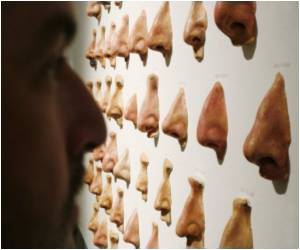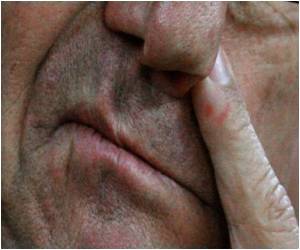
The general notion that MG is strictly a peripheral nervous system disease stems, in part, from early observations that the disorder is not accompanied by obvious brain pathology. Behavioral and physiological evidence that has been presented in support of MG's involvement in the central nervous system (CNS) has frequently been discounted due to lack of replicability of findings. For example, while some studies have found MG-related deficits in verbal memory, relative to controls, others have not. Nevertheless, scientists have continued to report CNS-related dysfunctions in MG, including visual and auditory deficiencies in this disease. Further, EEG tests have shown abnormalities in MG patients and MG-related antibodies have been detected in cerebrospinal fluid of patients.
In order to further explore the role of the central nervous system in MG, Doty and colleagues employed a smell test that has been used to assess the underlying connection between sense of smell and other neurodegenerative diseases.
"Our sense of smell is directly linked to numerous functions of the brain," says Doty, one of the original researchers who made the connection between loss of smell and Parkinson's disease. "Olfaction is a good model system for other, more complicated, brain circuits. Understanding our sense of smell, or lack thereof, offers broader insights into brain functions and diseases stemming from the brain."
In the current study, 27 MG patients were individually matched for age and sex to 27 normal controls. Eleven patients with polymyositis, a disorder with debilitating muscle symptoms similar to those of MG, also were tested. All participants were administered the University of Pennsylvania Smell Identification Test (UPSIT) and the Picture Identification Test (PIT), a picture test that is equivalent in content and form to the UPSIT designed to control for non-olfactory cognitive deficits. The research team also monitored each patient during the UPSIT and found no impaired ability to inhale, ruling out physical impediments to sniffing the odors.
Researchers found that the UPSIT scores of the MG patients were significantly lower than those of the age- and sex-matched normal controls, as well as the patients with polymyositis. Of the MG patients, only 15 percent were even aware of a smell problem before testing.
Advertisement
Based on these results, the authors believe larger studies are warranted to further explore the CNS underpinnings of MG and possibly utilize smell tests to aid in better classifying this disease and in monitoring its progression. They also suggest that clinicians should discuss smell dysfunction with MG patients to alert them of their heightened vulnerability to such environmental hazards as spoiled food, leaking natural gas, and fire, as well as the potential nutritional consequences of lessened flavor sensations.
Advertisement










